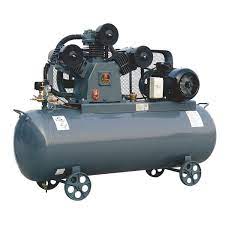-
Call
-
Whatsapp
9825014048
-
Location


Blog


BLOG

Importance of Piston Compressor Bushes
Many new ventures and enterprises begin with a piston compressor, one of the most ubiquitous models available.
Many parts must cooperate for air compressor systems to function reliably and efficiently. Piston compressor bushes are crucial among these parts. These little components are vital to the efficient operation and extended life of your air compressor, but they often need to be addressed despite their importance.
In this blog post, we'll delve into what piston compressor bushes are, their importance, and how they contribute to the overall performance of air compressor systems.

Reciprocating/ Piston Compressor:
The principle of positive displacement allows a reciprocating compressor to work. This implies that, like your car's internal combustion engine, it produces compressed air via valves and pistons.
Piston compressor bushes, also known simply as compressor bushes or piston bushes, are cylindrical components typically made from high-strength materials such as bronze, brass, or other alloys. They are designed to fit snugly around the piston rod within the compressor. The primary function of the bushes is to reduce friction between the moving piston and stationary components of the compressor.
The Role of Piston Compressor Bushes:
Reduction of Friction:
One of the primary roles of piston compressor bushes is to minimize friction between the piston and the cylinder wall. These bushes make the piston's movement easier by creating a smooth, low-friction surface, resulting in less wear and tear on the Cylinder and piston.
Enhanced Efficiency:
Piston compressor bushes reduce friction, contributing to the compressor's overall efficiency. Lower friction means less energy is required to operate the compressor, resulting in better energy efficiency and lower operational costs.
Heat Dissipation:
When running, compressors produce a lot of heat. Piston bushes help dissipate this heat, preventing the piston and Cylinder from overheating. This thermal management is crucial for maintaining the compressor's performance and longevity.
Alignment and Stability:
Proper piston alignment within the Cylinder is essential for the efficient operation of an air compressor. Piston bushes provide this alignment, ensuring the piston moves smoothly without tilting or wobbling. This stability is critical to maintaining consistent performance and preventing damage to the compressor.
Noise Reduction:
Piston bushes also help reduce the compressor's noise by minimizing metal-to-metal contact. This makes the operation quieter, which can be particularly important in settings where noise levels are a concern.
Importance in Air Compressor Systems:
-
Longevity of Components: (H3) The reduction of friction and proper alignment provided by piston compressor bushes help extend the life of various compressor components. This includes the piston and Cylinder and related parts such as seals and valves.
-
Maintenance and Downtime: (H3) Well-functioning piston bushes reduce the need for frequent maintenance. This translates to less downtime for the compressor, critical in industrial settings where continuous operation is often required.
-
Cost Savings: (H3) Piston compressor bushes contribute to significant cost savings over the compressor's lifetime by enhancing efficiency, reducing maintenance needs, and extending the lifespan of components. This makes them a valuable investment for any air compressor system.
Signs of Worn Piston Compressor Bushes:
Recognizing the signs of worn or failing piston compressor bushes can help prevent more severe issues. Some common indicators include:
- Increased noise during operation
- Reduced compressor efficiency
- Overheating of the compressor
- Visible wear or damage to the piston rod or Cylinder
- Increased vibration or instability during operation
If you notice any of these signs, it's essential to inspect the bushes and replace them if necessary.
Conclusion:
Piston compressor bushes may be small, but their impact on the performance and reliability of air compressor systems is substantial. These components greatly affect the efficiency and durability of the compressor by reducing friction, dissipating heat, ensuring proper alignment, and contributing t o noise reduction. Regular inspection and maintenance of piston bushes help ensure your air compressor operates smoothly and efficiently, saving you time and money in the long run.


FAQs

Frequently Ask Questions
Piston compressor bushes are cylindrical components typically made from high-strength materials such as bronze, brass, or other alloys. They fit snugly around the piston rod to protect it from wear and friction.
They are crucial for reducing friction, enhancing efficiency, dissipating heat, ensuring proper piston alignment and stability, and reducing noise. Collectively, these factors contribute to the smooth operation and longevity of the air compressor system.
Piston compressor bushes provide a smooth, low-friction surface between the moving piston and the stationary Cylinder, allowing the piston to move freely and reducing wear on both the piston and the Cylinder.
They are typically made from high-strength materials such as bronze, brass, or other durable alloys, which are chosen because they're resistant to heat and reduce friction.
By providing a smooth surface for the piston to move against, these bushes help spread and dissipate the heat generated during compressor operation, preventing overheating and maintaining performance.
Common signs include increased noise during operation, reduced compressor efficiency, overheating, visible wear or damage to the piston rod or Cylinder, and increased vibration or instability.
